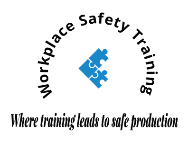Information
-
Audit
-
Client / Site
-
Conducted on
-
Prepared by
-
Location
-
Personnel
-
Scope of work being performed at time of inspection?
GENERAL INFORMATION
-
Are OSHA postings avaliable for employees to view?
-
In Panel of Physician states, is the panel posted for employees to select treatment?
-
Are emergency contacts located where employees have access in the event of an emergency?
-
Is a copy of the OSHA 1926 avaliable on site?
-
Is a copy of the company safety manual on site?
-
Is there a chemical list with matching SDS on site?
-
Are weekly tool box talks documented?
-
Is there a log of employees who has completed orientation?
-
Does the contractor have additional PPE avaliable on site for visitors or for replacement?
-
Training records avaliable for all employees?
Subpart C (General Requirements)
-
Is there a copy of a fire protection and prevention program at the job site?
-
Are combustable scraps and debris removed from work areas at regular intervals?
-
Is access unobstructed at all times?
-
Is there an emergency action plan on site?
Subpart D
-
Are first aid supplies easily accessible? 1926.50(d)(1)
-
Is there a first aid supply inspection log? Completed weekly? 1926.50(d)(2)
-
Is potable water provided to employees? 1926.51(a)(2)
-
Is adequate toilet facilities avaliable on site? 1926.51(c)
Subpart E (PPE)
-
Are employees wearing required PPE?
-
Is face protection being used when exposed to flying particle? 1926.102(a)(2)
-
Are glasses compliant with ANSI Z87? 1926.102(b)(1)(iii)
Subpart F ( Fire Protection)
-
Are fire extinguishers avaliable when hot work is being performed?
-
Are fire extinguishers inspected periodically? 1926.150(c)(1)(viii)
-
Are employees trained on the proper way to inspect fire extinguishers?
-
Are approved containers used to store and handle flammable liquids? 1926.152(a)(1)
Subpart G (Signs, Signals, and Barricades)
-
Are signs visible at all times while work is being performed? 1926.200(a)
-
If performing traffic control, are employees trained per the MUTCD? 1926.201(a)
Subpart H (Material Handling)
-
Are all materials stacked to prevent sliding or falling? 1926.250(a)(1)
-
Aisles and passageways kept clear to provide free and safet movement? 1926.250(a)(3)
-
Are materials stored 6' away from inside openings and 10' from edge of structure? 1926.250(b)(1)
-
Rigging equipment for handling materials inspected prior to use on each shift? 1926.251(a)(1)
-
If alloy steel chains are used, chains must have permanent affixed tag.1926.251(b)(1)
-
Record of chain sling inspection for most recent month? 1926.251(b)(6)(ii)
-
Are slings padded or protected from sharp edges? 1926.251(c)(9)
Subpart I (Tools hand and Power)
-
Are tools inspected prior to use? 1926.300(a)
-
Are wooden handles kept free from splinters or cracks? 1926.301(d)
-
If powder actuated tools are being used such as a ramset or hilti gun, are employees trained? 1926.302(e)(4)
-
Are damaged tools removed from service or tagged? 1926.302(e)(3)
-
Are all manufatured guards and handles in place? 1926.302(e)(11)
-
Are grinding wheels inspected and ring tested prior to use? 1926.303(c)(7)
Subpart J (welding and cutting)
-
Valve protection caps in place while cylinders are stored? 1926.350(a)(1)
-
Oxygen cylinders seperated from fuel-gas by 20' of fire wall? 1926.350(a)(10)
-
Are torches inspected before each use? 1926.350(g)(2)
-
Is a friction lighter used to ignite torches? 1926.350 (g)(3)
-
Suitable fire extinguishing equipment immediately avaliable in the work area? 1926.352(d)
Subpart K (Electrical)
-
Are GFCI's used on temporary power? 1926.404(b)(1)(i)
-
Portable generators grounded? 1926.404(f)(3)(i)
-
Are flexible cords protected from damage? 1926.405(a)(2)(ii)(I)
-
Strain relief in tact on flexible cords? 1926.405(g)(2)(iv)
Subpart L (Scaffolding)
-
Each working level fully planked? 1926.451(b)(1)(ii)
-
Fall protection being used during erection and dismantling? 1926.451(g)(2)
-
Training records for employees working on or from scaffolding? 1926.454(a)
Subpart M (Fall Protection)
-
Is a competent person identified?1926.502(k)(4)
-
Are guardrails installed correctly? 1926.502(b)(1)
-
Are anchor points capable of supporting at least 5,000 pounds? 1926.502(d)(15)
-
Are holes larger than 2" covered and marked? 1926.502(i)(4)
-
Is a written fall protection plan on site and covered with the employees? 1926.502(k)
-
Does the fall protection training cover areas of 1926.503 (a)(2)(i)
Subpart O (Mechanized Equipment)
-
Does the equipment have proper audible devices? 1926.601(b)(3)
-
Is cab glass free from cracks? 1926.601(b)(5)
-
Are seatbelts in working order? 1926.601(b)(9)
Subpart Q (Concrete and Masonry)
-
All protruding steel protected from the hazard of impalment? 1926.701(b)
-
Signs and barriers to limit access during tensioning operations? 1926.701(c)(2)
-
Shoring and reshoring plans on site? 1926.703(a)(2)
Subpart X (Stairways and Ladders)
-
Double cleated ladder used where 25 or more employees are? 1926.1051(a)(2)
-
Do ladders extend 3' above the landing? 1926.1053(b)(1)
-
Is a lifting device such as rope atteched to ladder to ensure 3 pts of contact? 1926.1053(b)(22)
-
Training compliant with 1926.1060?
Subpart Z (Toxic and Hazardous Substances)
-
Is Table1 being followed? 1926.1153(c)(1)
-
If employees use respirators, are they fit tested and medically cleared? 1910.134
-
Are employees offered medical surveillance? 1926.1153(h)(1)(i)
-
Is a silica exposure control plan on site? 1926.1153(g)(1)
Subpart AA (confined Space)
-
Is a competent person Identified? 1926.1203(a)
-
Is testing equipment avaliable on site to determine if the confined space is permit or not? 1926.1203(g)(1)
-
Is a written confined space program covered with employees?1926.1203(d)
-
Are training records avaliable for employees that may enter a confined space? 1926.1207(a)
Subpart CC (Cranes)
-
Are all employees working around the crane trained that they can stop operation if there is a safety concern? 1926.1418
-
Are employees trainied on signals voice and hand? 1926.1420 and 1421
-
Do employees have a basic understanding of operation and limitations of the crane? 1926.1428(C)(3)






